We’re making the infographics and charts from this issue of the ReThink Quarterly available for anyone to use in their own presentations and reports.
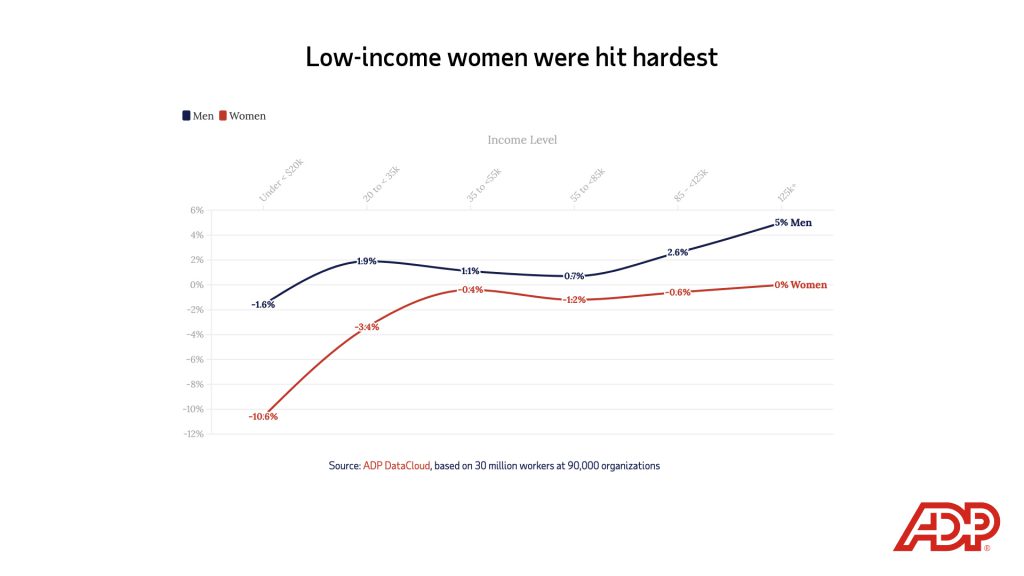
Women’s careers and salaries were impacted more by COVID than men, for two primary reasons: More women work informally, with 58% of women working without a formal contract, according to the International Labor Organization, and women make up more of the customer-facing and domestic caregiving sectors that were hit hard by lockdown.
Embed this visualization
<div class="flourish-embed flourish-chord" data-src="visualisation/6392463"><script src="https://public.flourish.studio/resources/embed.js"></script></div>
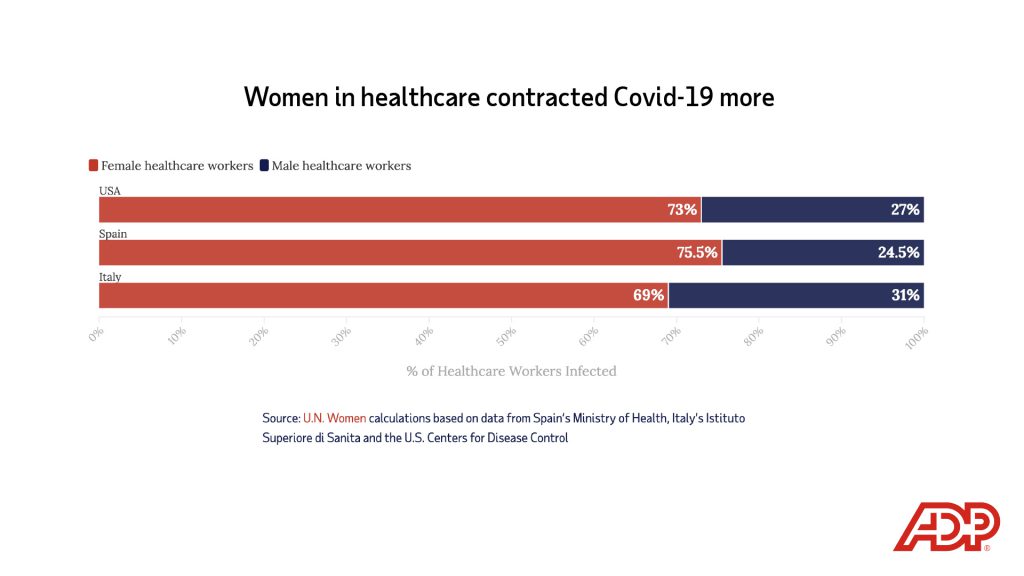
Women make up 70% of the healthcare industry globally, meaning they have been more exposed to COVID during the pandemic. In some countries, Covid-19 infections among female health workers are more than double that of male health workers.
Embed this visualization
<div class="flourish-embed flourish-chart" data-src="visualisation/6089797"><script src="https://public.flourish.studio/resources/embed.js"></script></div>
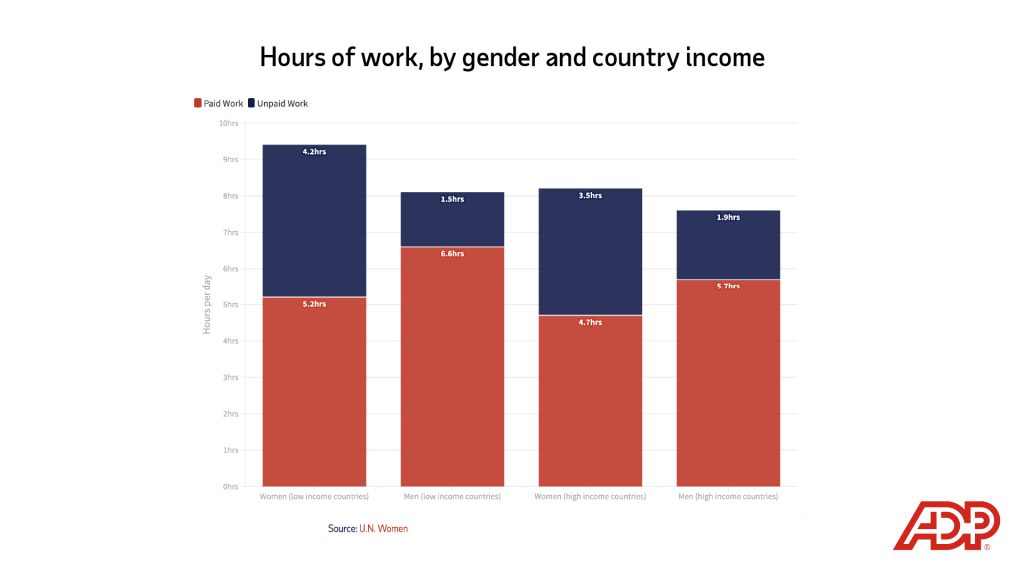
Although the lockdown has led to some men doing more domestic work, women still carry the burden. According the International Labour Organisation, women’s unpaid contributions to health-related caretaking equate to 2.6% of the global GDP, the equivalent of $1.5 trillion.
Embed this visualization
<div class="flourish-embed flourish-hierarchy" data-src="visualisation/6313275"><script src="https://public.flourish.studio/resources/embed.js"></script></div>
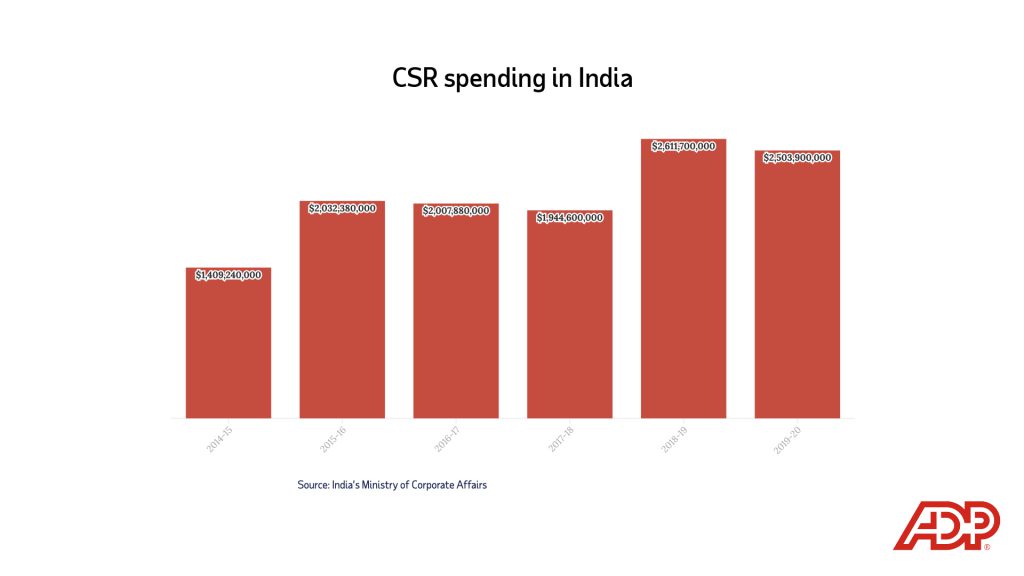
In 2014, India became the first country to mandate CSR (Corporate Social Responsibility) spending for companies with a net worth of over $68 million. Since then, Indian companies have spent over $12.2 billion on CSR in the years 2014-2020.
Embed this visualization
<div class="flourish-embed flourish-hierarchy" data-src="visualisation/6378931"><script src="https://public.flourish.studio/resources/embed.js"></script></div>
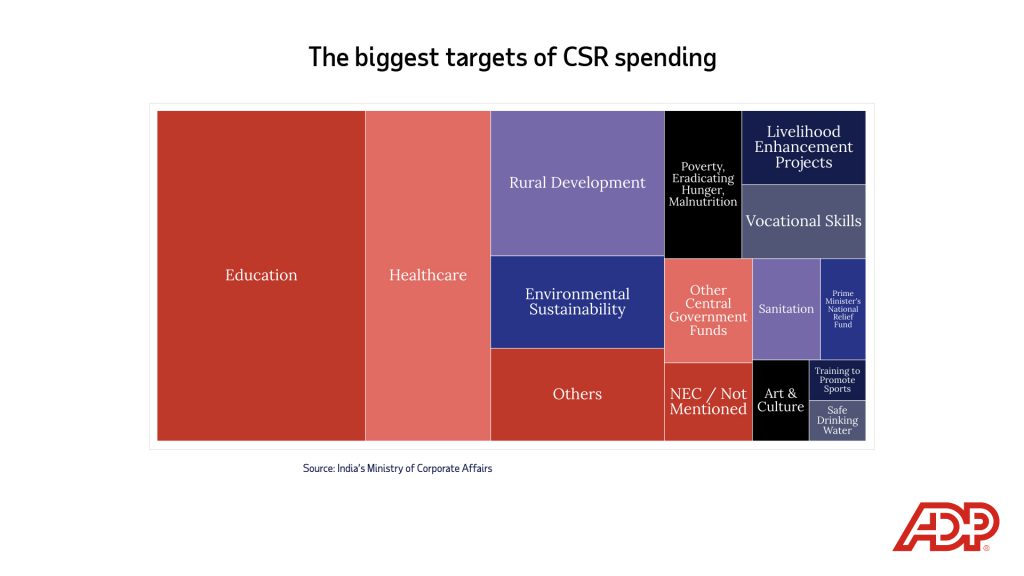
At first, Indian companies focused their CSR spending with large NGOs in Education and Healthcare. But recently, there has been a willingness to partner with social enterprises, accelerators and incubators.
Embed this visualization
<div class="flourish-embed flourish-hierarchy" data-src="visualisation/6379106"><script src="https://public.flourish.studio/resources/embed.js"></script></div>
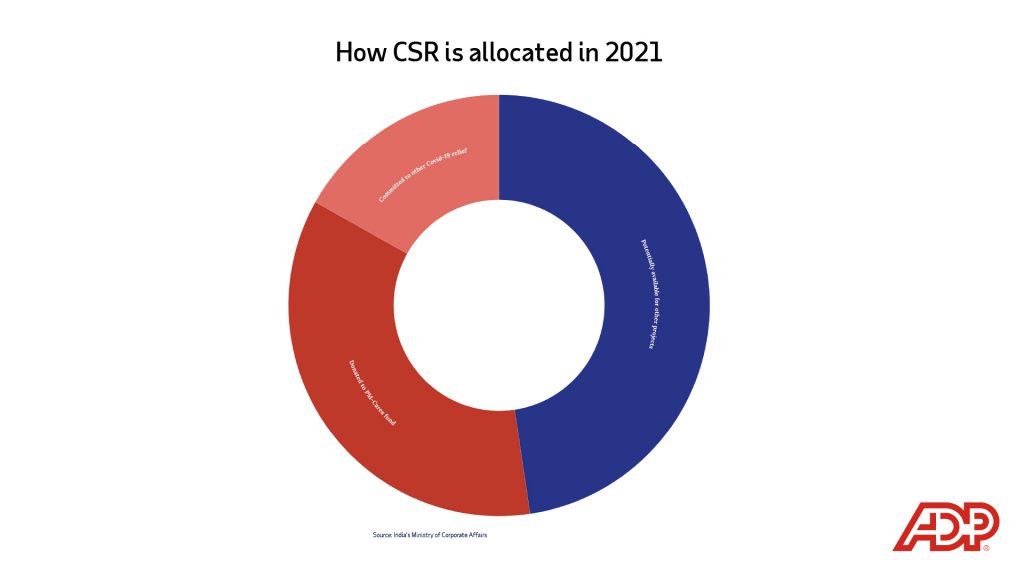
In March 2020, the Indian Government announced that companies’ spending on COVID relief would count towards CSR targets. As a result, more than half of the $2.2 billion expected budget for CSR in 2021 will go to COVID relief projects.
Embed this visualization
<div class="flourish-embed flourish-hierarchy" data-src="visualisation/6379252"><script src="https://public.flourish.studio/resources/embed.js"></script></div>
Sign up to keep up to date with ReThink Q.


